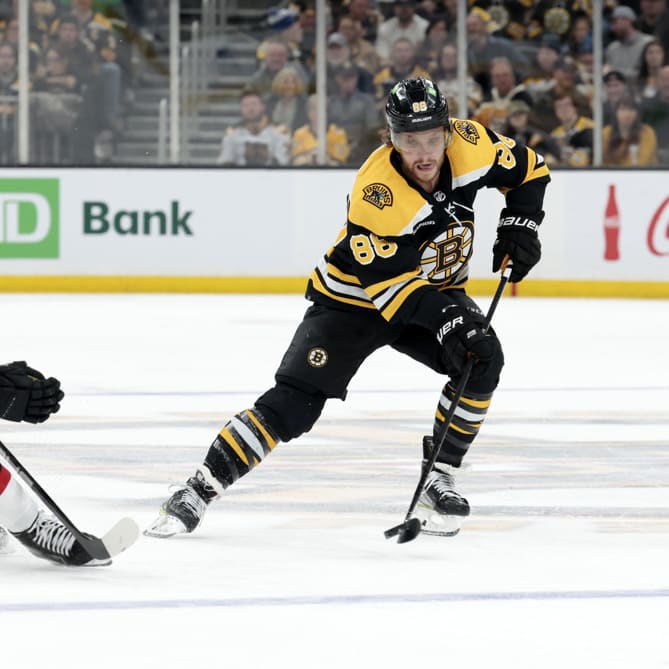This article is part of our From the Press Box series.
This week, we tip our hat to the newest Hall of Famers, review a rule that should protect goalies and visit the pressing issue of divisional realignment.
Hockey Hall of Fame receives four worthy candidates
Last weekend the Hockey Hall of Fame inductions, held in Toronto, welcomed the most recent collection of inductees, a quartet of players who, when considering their career achievements, may represent one of the most talented and decorated groups to ever enter the Hall.
Mark Howe was the oldest of the group and joins his father, Gordie (Mr. Hockey) in the Player's Section. He was known as a very good skater, with a fluid motion who was also one of that rare breed of players who was equally adept at forward and on defense. Oddly, this was not something that was highlighted in many quarters, when reviewing his long and distinguished career.
In playing a total of 926 NHL games, he tallied 197 goals and 595 assists, he completed 16 seasons in the NHL. In that time he played for Hartford, Philadelphia and Detroit and only posted one season where his +/- rating was negative (his final season - 18 games in 1994-1995).
Perhaps the real highlight for Mark was the fact that he began his pro career as an 18-year old winger in the WHA, where he was an offensive force who was fortunate to play along side his father, Gordie, and his brother, Marty. Now, one of hockey's royal families boasts two deserving members in Hockey's ultimate shrine.
Joe Nieuwendyk can look back on a distinguished 20 year career in the NHL, which was highlighted by Stanley Cup wins in Calgary, New Jersey and Dallas. He was an integral part of each of those championship teams, a feat that has not been equaled by too many players in the history of the game. Though, a native of Oshawa, Ontario, he took a then-relatively unconventional route the NHL, via US College Hockey to reach hockey's major league.
One of the game's most prolific scorers began his NHL career with a pair of 51-goal seasons (the highest totals of his career) in his first two years as a member of the Calgary Flames. He would go on to score 526 goals and 524 assists during his 1257 games played and would add 66 goals and 50 assists in 158 playoff games.
Ed Belfour's long career in the NHL was not something he could have anticipated when he debuted as a free agent signee with Chicago in the 1988-1989 season. He would soon establish himself as a throwback to the six-team NHL as a workhorse in the crease as he regularly appeared in as many as 74 games in a season. The number of appearances did not compromise the quality of his performance of over time.
He would retire with 484 wins and 76 shutouts, both marks among the best in the history of his position. His 2.50 goals against average was also one of the best marks for any goalie who played during his career, a time in hockey history where goal production was at its zenith. Though he is most know for a long tenure of excellence in Chicago and a Cup win in Dallas, this combative goalkeeper, once a student of the great Vladislav Tretiak, Belfour highlighted his enduring quality with an outstanding second of three seasons in Toronto, when as a 39 year old, he would record a career-high 10 shutouts and a 2.13 goals against average in 59 appearances with the Leafs.
Doug Gilmour began his NHL odyssey as a late round draft pick by St. Louis in 1982. Though he would go on to post an incredible 177 points in 68 games during his final Junior A season in Cornwall, the diminutive (5' 11", 175 lbs.) pivot would make his NHL debut as a checking line center with the Blues. It took him three full seasons before he would shed that image and evolve as a big-time point producer.
He would move on, in that more offensive capacity and play a central role in a Stanley Cup win with Calgary, but his career would also be highlighted, when he moved on to Toronto as the central piece in a huge 10-player trade. In his five and half years as a Leaf, he helped restore the club as a league power and established a single season individual points record for a Toronto player, with 127 in the 1992-1993 season and he retired as the leading playoff scorer in the history of the franchise (compiling 77 points in only 52 games).
All four players would have been early draft picks in hockey pools for much of their careers, so pool owners are likely very fluent with their awareness of the credentials that make the Class of 2011, one of the best ever honored by the Hall
Running of the Goalies - the latest hockey hot-button issue
No major North American sport does as much tinkering with its rules as hockey does. In the wake of two fairly serious injuries to James Reimer in Toronto and Ryan Miller in Buffalo, the league is looking at the current rules for protecting goalies. There are a couple of big differences with the incident that put these goalies on the shelf, however.
In Reimer's case, he was positioned at the top of his crease, when he was sideswiped twice in an early season game by a couple of Montreal Canadiens forwards. Reimer was not in position of the puck in either circumstance and he was knocked out of position when he was not even expecting to deal with contact.
Ryan Miller invited the potential for contact by taking possession of the puck, on his stick, well outside of his crease area. An onrushing Milan Lucic hit him in that open ice area and both of these goalies are now sidelined by concussion-type symptoms. The NHL has a strict protocol that prohibits players from even practicing until those symptoms disappear. At this time, they are very serious losses to the roster of their respective teams.
NHL rules are very clear about the goalie's safety while in their crease area, a circumstance that was clearly ignored in the Reimer case and yet there was no supplementary discipline in that circumstance.
Oddly, the public outcry has been louder in the most recent case involving Miller. While the case can be made that he was hit perhaps a split second after he played the puck, he was not in his crease area and deemed in a fair area for opposing contact. The unwritten rule, which most players observe, is to not deliver a punishing blow to opposing goalies that are outside their creases. The argument that probably saved Lucic from a suspension was that Miller was not in his safe zone (the crease) and as such could be treated like any opposing skater. Replays do show that Lucic made an extra effort to finish his check on the goalie and as such, he could easily have been suspended, too.
The bottom line, for both the Leafs and Sabres (and many fantasy team owners), is that they are going to miss their starting goalies (a serious deficit) for a significant number of games and no opponent is being held responsible for the actions that resulted in their injuries. That's just wrong.
Realignment Talk
Once again, the NHL remains at the forefront in this area as they are periodically finding reasons to reformat their divisions. With the move of Atlanta's franchise into Winnipeg, the league has seen an opportunity to reopen this discussion, but there are other factors at play. Detroit and Columbus are two teams which have been miscast as Western Conference clubs and have been clamoring for a fairer shake than their current lot, which has them playing the bulk of their road games in different time zones than their home base, which is hard on the teams and their fans.
The most-often-shared possible outcome sees these teams as candidates for a move to the East, which would certainly disappoint many western clubs who would forfeit popular rivalries with the Wings, but there is another issue that is likely going to be a tougher nut to crack.
We are hearing of two conferences, featuring one division of eight teams and one of seven teams, with the top four teams competing within their divisions before opposing other divisional survivors in later rounds. While teams would play unbalanced schedules, the number of teams in each division isn't level and so the split of games is not going to be consistent. Also, the seven-team divisions will have a greater chance to qualify for the post-season than the eight-team alignments.
This is an issue that needs some more thinking time and may have an impact on hockey pool drafts, depending on the depth of quality teams in each division. That may evolve into an added item to evaluate as you prepare for your annual drafts.
I invite you to send your feedback and you can follow me on Twitter (statsman22). You can also listen to me on Tuesday nights, at 9:30 EST on Sirius/XM Radio, on "THE FANTASY DRIVE", Sirius 210 and XM 87.












